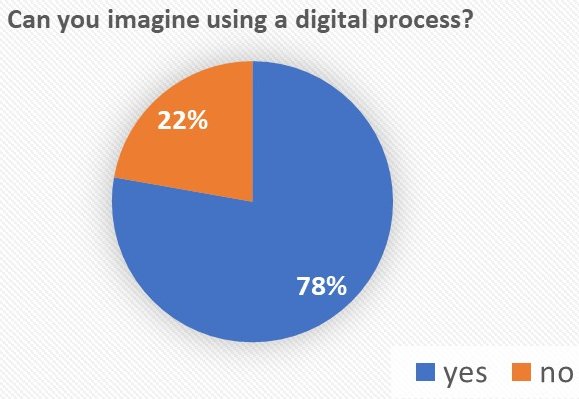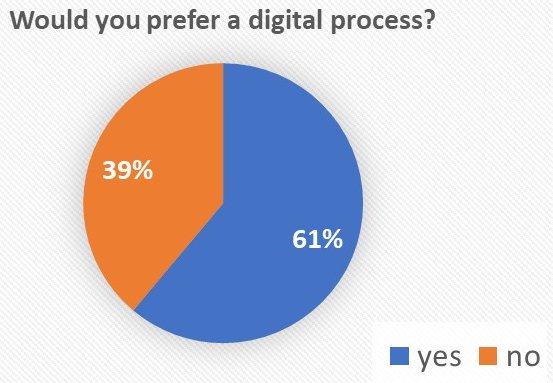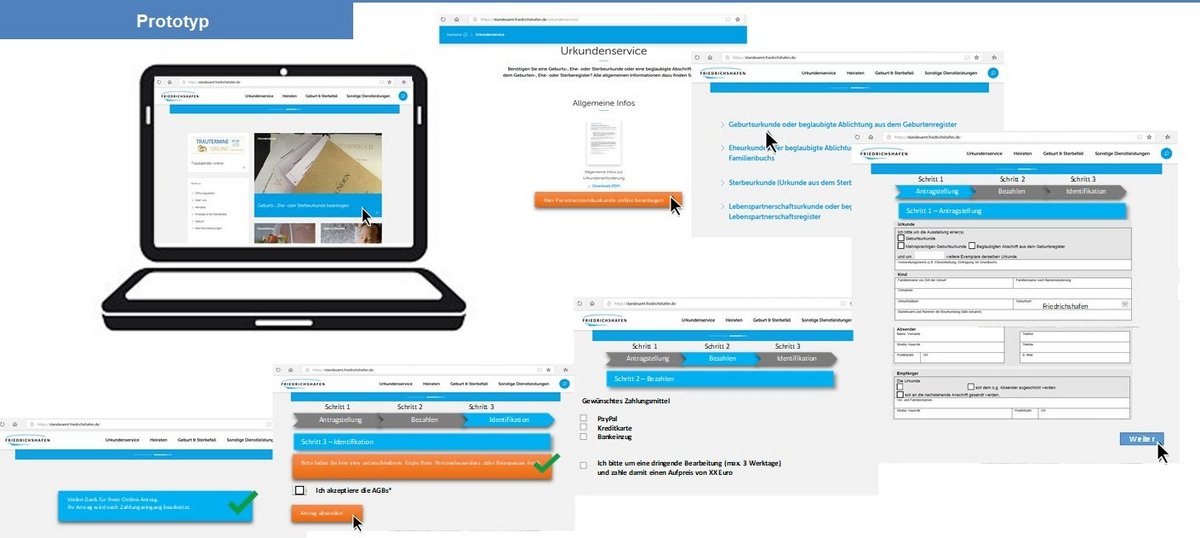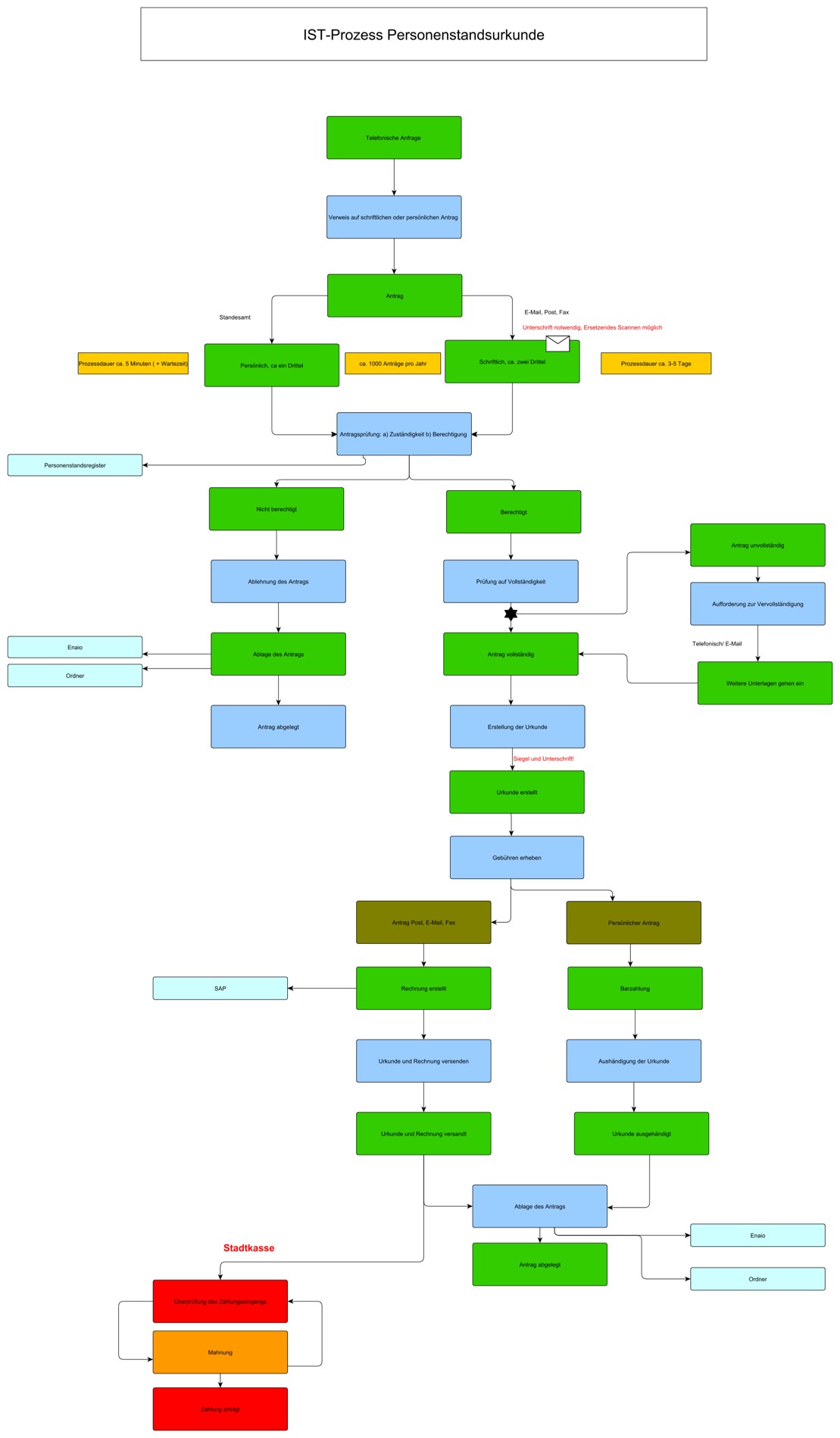
User-Centered Design in Digital Administration Processes Using the Example of the Civil Status Certificate in Friedrichshafen
Philipp Erdmann, Lars Hummel and Franziska Lauth
Abstract
Digitization, which will become mandatory in the near future under the German Online Access Act, creates new requirements for public administration. It is therefore important that public administration considers user expectations and offers more services online. How these requirements look in concrete terms was investigated using the example of the digitization of the civil status certificate in Friedrichshafen. An expert interview was conducted with those responsible for the process to determine how the actual process of applying for a civil status certificate is proceeding. In a second step, the users of the city of Friedrichshafen who went through this process were interviewed. They were asked about their wishes and suggestions for improvement and for the digital process of the civil status certificate. Based on the evaluated interview data, a prototype of a future online process was developed. The core of the prototype was the creation of an online payment option within a simple and clearly structured user interface. Another important finding is that the digital process should not replace the analogue one, but should be seen as a valuable completion. Meanwhile, users still request and appreciate personal support.
Context
In the future, the so-called service@bw platform allows the use of various digital administrative processes in Baden-Württemberg. Against this background, we accompanied the city of Friedrichshafen through the process of digitizing the civil status certificate. Various theoretical concepts (e.g. the “public service-dominant approach” by Osborne, Radnor and Nasi, 2013) were included in the considerations of the process. The aim is to design services that are oriented towards the needs of users in order to meet the changed requirements.
Method
In a first step, the administrative process of applying for a civil status certificate was derived from a 90-minute expert interview with the process managers. The process was illustrated in the form of a flowchart diagram (Figure 3). In a second step, 18 user interviews were conducted to determine whether a digital design of the administration process is desired and which optimization options are seen. Further, wishes and expectations for the future process were also inquired. The target process was then modelled in a second flowchart diagram (Figure 4). Using a user-journey map, the individual steps taken by users when applying for a civil status certificate could be presented in detail and the respective optimization possibilities were highlighted. Applying the sketching method, a prototype of a future online process was developed which models the new process in the form of small sketches.

Results
In the following, the central findings resulting from the user interviews are presented:
Positive attitude towards the digital process
The first arising question was whether a digital offering of administrative processes is desirable at all. The conducted user interviews showed that although a vast majority of users can imagine applying for a civil status certificate online (Figure 1),

fewer people really prefer an online application to other forms (Figure 2). Problematic opening and waiting times in the use of administrative services are the main argument for the introduction of a digital process. Users stress flexibility and a process with low personal and time expenditure. An online process would avoid the search for a parking space as well as long travel and waiting times.
Wishes for the design of the digital process
Using an online option for the administration process, users place importance on data protection and a simple, coherent structure. In addition, a portal is desired which centralizes and handles as many administrative issues as possible. Clearly structured overview pages with relevant information on required documents and corresponding forms are mentioned. Notifications about the processing status are also suggested. Many users expressed the wish for a digital payment option and a digital function for subsequent filing (see incorporation of the various wishes in comparison from the status quo to the target flowchart in figures 3 & 4 – see appendix).
Practical Implications
Our research results in the following practical implications, which can also be implemented by other public administrations. The presented user-centered design proves to be a suitable approach for fast finding results, which meets both the requirements of the users and the public administration. Especially in the age of digitization, the applied methods (user-journey, sketching, flowcharts) are very helpful to generate a red thread for project teams. It is illustrated how the status quo looks like, which contact points exist during different process steps and which difficulties occur on both sides. The integration of the users’ ideas is crucial for the acceptance of process changes in the public at large. Nothing would be more frustrating and inhibiting regarding the development of digital services if the users’ wishes were not taken into account and, as a result, digital services were not actively used. Even if an application in practice initially costs resources and competencies have to be generated, the positive feedback of the public and the public administration suggests a medium-term pay off. Digitization should not be implemented for its own sake, central is rather the question of how it should be done. Despite all the focus on the design of digital processes, it is important not to neglect personal support. Digitization was mostly seen in the discussions as a supplement or simplification of the previous process, but not as a replacement. It is therefore important to offer attendance times further on in order to guarantee personal support.
Key Points
A digitization of administrative processes is generally welcomed by users. However, the precise design of the processes is important. In particular, data security and remaining personal support should not be ignored here. This paper shows, that the involvement of users in designing digital administrative processes is valuable and essential in order to achieve user acceptance and to build trust in the public administration. With the applied methods, a process could be designed within a short time (Figure 5) that offers added value for all involved parties.

Files

Philipp Erdmann:
Philipp Erdmann is currently studying Politics and Public Administration at the University of Konstanz. He will complete his Bachelor of Arts in March 2019. He writes his final thesis on „Digital Pilots in Public Administration“. His research interests lie in the fields of digitization of public administration and politics in sport.

Lars Hummel:
Lars Hummel is currently studying Politics and Public Administration at the University of Konstanz. He will complete his Bachelor of Arts in March 2019. He writes his thesis on „Agility in Public Administration“. In addition to agility, he is interested in the digitization of public administration and public sector consulting.

Franziska Lauth:
Franziska Lauth is currently studying Politics and Public Administration at the University of Konstanz. She will complete his Bachelor of Arts in June 2019. She writes her thesis on „Inter-sectoral Cooperation in Municipal Refugee Integration“. Her research interests focus on organizational theories, migration and technology assessment.


